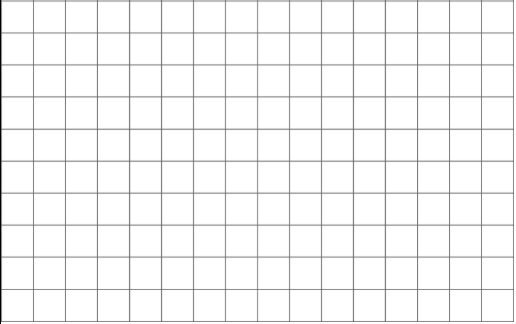26.1: Using Decimals in a Shopping Context
- Page ID
- 35074
Lesson
Let's use what we know about decimals to make shopping decisions.
Exercise \(\PageIndex{1}\): Snacks from the Concession Stand
Clare went to a concession stand that sells pretzels for $3.25, drinks for $1.85, and bags of popcorn for $0.99 each. She bought at least one of each item and spent no more than $10.

- Could Clare have purchased 2 pretzels, 2 drinks, and 2 bags of popcorn? Explain your reasoning.
- Could she have bought 1 pretzel, 1 drink, and 5 bags of popcorn? Explain your reasoning.
Exercise \(\PageIndex{2}\): Planning a Dinner Party
You are planning a dinner party with a budget of $50 and a menu that consists of 1 main dish, 2 side dishes, and 1 dessert. There will be 8 guests at your party.
Choose your menu items and decide on the quantities to buy so you stay on budget. If you choose meat, fish, or poultry for your main dish, plan to buy at least 0.5 pound per person.
- The budget is $ ___________ per guest.
- Use the worksheet to record your choices and estimated costs. Then find the estimated total cost and cost per person. See examples in the first two rows.
item quantity needed advertised price estimated subtotal ($) estimated cost per person ($) example main dish: fish \(4\) pounds \($6.69\) per pound \(4\cdot 7=28\) \(28\div 8=3.50\) example dessert: cupcakes \(8\) cupcakes \($2.99\) per \(6\) cupcakes \(2\cdot 3=6\) \(6\div =0.75\) main dish: side dish 1: side dish 2: dessert: estimated total Table \(\PageIndex{1}\) - Is your estimated total close to your budget? If so, continue to the next question. If not, revise your menu choices until your estimated total is close to the budget.
- Calculate the actual costs of the two most expensive items and add them. Show your reasoning.
- How will you know if your total cost for all menu items will or will not exceed your budget? Is there a way to predict this without adding all the exact costs? Explain your reasoning.
Are you ready for more?
How much would it cost to plant the grass on a football field? Explain or show your reasoning.
Summary
We often use decimals when dealing with money. In these situations, sometimes we round and make estimates, and other times we calculate the numbers more precisely.
There are many different ways we can add, subtract, multiply, and divide decimals. When we perform these calculations, it is helpful to understand the meanings of the digits in a number and the properties of operations. We will investigate how these understandings help us work with decimals in upcoming lessons.
Practice
Exercise \(\PageIndex{3}\)
Mai had $14.50. She spent $4.35 at the snack bar and $5.25 at the arcade. What is the exact amount of money Mai has left?
- $9.60
- $10.60
- $4.90
- $5.90
Exercise \(\PageIndex{4}\)
A large cheese pizza costs $7.50. Diego has $40 to spend on pizzas. How many large cheese pizzas can he afford? Explain or show your reasoning.
Exercise \(\PageIndex{5}\)
Tickets to a show cost $5.50 for adults and $4.25 for students. A family is purchasing 2 adult tickets and 3 student tickets.
- Estimate the total cost.
- What is the exact cost?
- If the family pays $25, what is the exact amount of change they should receive?
Exercise \(\PageIndex{6}\)
Chicken costs $3.20 per pound, and beef costs $4.59 per pound. Answer each question and show your reasoning.
- What is the exact cost of 3 pounds of chicken?
- What is the exact cost of 3 pound of beef?
- How much more does 3 pounds of beef cost than 3 pounds of chicken?
Exercise \(\PageIndex{7}\)
- How many \(\frac{1}{5}\)-liter glasses can Lin fill with a \(1\frac{1}{2}\)-liter bottle of water?
- How many \(1\frac{1}{2}\)-liter bottles of water does it take to fill a \(16\)-liter jug?
(From Unit 4.5.1)
Exercise \(\PageIndex{8}\)
Let the side length of each small square on the grid represents 1 unit. Draw two different triangles, each with base \(5\frac{1}{2}\) units and area \(19\frac{1}{4}\) units2.

Why does each of your triangles have area \(19\frac{1}{4}\text{ units}^{2}\)? Explain or show your reasoning.
(From Unit 4.4.3)
Exercise \(\PageIndex{9}\)
Find each quotient.
- \(\frac{5}{6}\div\frac{1}{6}\)
- \(1\frac{1}{6}\div\frac{1}{12}\)
- \(\frac{10}{6}\div\frac{1}{24}\)
(From Unit 4.3.1)


